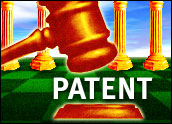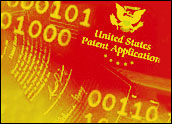
On October 30, 2008, the Court of Appeals that handles all appeals of patent cases in the U.S. issued a landmark decision. The Federal Circuit’s opinion in In re Bilski, 545 F.3d 943 (2008), sent shockwaves through the high-tech legal community. The court held that in order to be patentable, a method must either be “tied to a particular machine,” or “transform[ ] a particular article into a different state or thing.” Only such methods, according to the Federal Circuit, are eligible for patent protection under Section 101 of the Patent Act. Id. at 954.
Although critics and commentators have pointed to an array of ambiguities in the Bilski case and to a variety of questions that it failed to answer, one of the decision’s most vexing consequences concerns the cloud of uncertainty that it has cast over “business method patents.”
While the new “machine-or-transformation” test applies to all types of method claims — including those in fields such as the life sciences, Internet, and software applications — the Bilski case has especially placed patents on business methods in peril. Business method patents are often computer- or software-implemented, and the courts have wrestled over the question of whether this sufficiently “ties” them “to a particular machine” such that they are patentable.
As things currently stand, companies seeking to protect their IP with patents on novel and even groundbreaking ways of conducting business in the 21st Century cannot predict with any degree of certainty whether the U.S. Patent & Trademark Office (PTO) will allow their claims, let alone whether their claims will pass scrutiny in the courts when litigated. Help, however, may be on the way.
On June 1, 2009, the U.S. Supreme Court granted Bilski’s petition for writ of certiorari and thereby agreed to hear the case. This is a rare occurrence, for the Supreme Court does not accept many patent appeals. The Federal Circuit typically has the “final word” on matters of patent law, but when the Supreme Court steps in, its rulings govern. The high court’s decision, which should come next spring, may have major ramifications both at the PTO and in the courts.
The ‘Tied to a Machine’ Problem
The patent-at-issue in In re Bilski is directed toward methods of managing risk in commodity trading, i.e., “hedging.” The patent applicant did not even try to argue that the claims were “tied to a machine.” The truth is that they were not tethered to any type of particular machine. As a result, the Federal Circuit did not have much of an opportunity to clarify or expand upon what the “tied to a particular machine” prong of its test means.
There are, to be sure, some patent claims that will be relatively easy to assess. For instance, the Federal Circuit’s decision — if it stands — put to rest whether claims at one end of the extreme can be patentable under 35 U.S.C. 101. In a footnote, the court stated that “[o]f course, a claimed process wherein all of the process steps may be performed entirely in the human mind is obviously not tied to any machine. … As a result, it would not be patent-eligible under 101.” Bilski, 545 F.3d at 961 n. 26.
As we explain in more detail below, assessing whether most patent claims are tied to a sufficiently particular machine is a fuzzy and seemingly subjective test. When is the “machine” particular enough? When is the “tie” strong enough? We in the patent community have been living with the new Bilski test for almost a year now, and the answers — especially for business method patents — remain unclear.
Conflicting Decisions at the PTO
At the PTO, specifically at the Board of Patent Appeals and Interferences, the question of what “tied to a particular machine” means is not easily answered. The decisions, moreover, have varied greatly and appear to be inconsistent. This makes it even more difficult for a company and its counsel to predict whether its patent claims will be allowed. Two recent cases illustrate the problem.
Ex Parte Greene (April 24, 2009) illustrates a relatively strict application of Bilski. The Board there considered two claims that were directed to a “computer system for performing a fast Fourier transform on N ordered inputs in n stages.” Even though the claims were limited to a “computer system” that used hardware components like “vector processors” or a “single instruction multiple data processor” — which clearly tied the claims to a machine at least to some extent — the Board still concluded that the claims were not patentable.
The panel reasoned that the claims merely implemented an optimized FFT on a conventional computer system that included one or more conventional processors, and that no particular type of computer system was specified. The Board held that merely adding a nominal recitation of conventional computer hardware in a claim otherwise directed to a pure mathematical algorithm was insufficient to render the claims statutory under Bilski.
Ex Parte Dickerson (July 9, 2009), in contrast, embodies a more relaxed application of the Bilski test. In this case, the Board considered claims directed to a method and system for increasing the business value of a company by identifying operational metrics in the company’s industry, comparing the company’s performance to those metrics, identifying performance gaps, and identifying a solution. Claim 23 was a “computerized method” for performing these steps, which included the step of outputting the solution from a “computer system.”
The Examiner rejected this claim — but the Board reversed. This time around, the Board found that because the claim “recite[d] a computerized method which include[d] the step of outputting information from a computer,” it was “tied to a particular machine or apparatus” and therefore qualified as patentable under Bilski.
The conclusions in Dickerson and Greene are in at least some tension. Greene rejected claims that were limited to a “computer system” and held that such a limitation was not tied to a particular type of machine. Dickerson considered a claim that was for a “computerized method” that outputted data from a “computer system,” and found that it was tied to a sufficiently particular machine. Other post-Bilski Board decisions have reached similarly divergent results.
Will the Supreme Court Help?
Patent practitioners hope that the Supreme Court’s upcoming decision in Bilski will help clarify this murky area. The Court may not do so, because the claims presented by the Bilski application do not provide an ideal vehicle for a robust discussion of the “tied to machine” prong of the current test. However, there is at least a chance that the Justices will issue pronouncements offering some guidance.
We think that the answer to this riddle could possibly lie in the doctrine of “pre-emption.” Relying on older Supreme Court cases like Diamond v. Diehr, 450 U.S. 175, 187-88 (1981), and Gottschalk v. Benson, 409 U.S. 63, 70-72 (1972), the Bilski decision itself emphasized that “[t]he question” it really faced was “whether Applicants’ claim recites a fundamental principle and, if so, whether it would pre-empt substantially all uses of that fundamental principle if allowed.” Bilski, 545 F.3d at 954.
In other words, although it wound up adopting the “machine-or-transformation” test described above, Bilski recognized that Supreme Court precedent suggests that Section 101 of the Patent Act mandates “an inquiry into the scope of [a claim’s reach], i.e., whether the effect of allowing the claim would be to allow the patentee to pre-empt substantially all uses of [a] fundamental principle. If so, the claim is not drawn to patent-eligible subject matter.” Bilski, 545 F.3d at 953.
Reasoning like this could mean that bright-line answers to questions about whether a claim is “tied to a particular machine” will be hard to come by. For example, a general purpose machine — like a “computer system” as claimed in Greene — might not be “particular” enough in the context of one claim because allowing the claim would “pre-empt” all uses of the claimed method. On the other hand, if there are uses for the claimed method that exist outside the context of a general “computer system,” then claiming the method when used in a computer might be a sufficient tie to a machine such that the claim would be allowable.
In the end, whether a business method tied to a general purpose computer or the Internet is patentable subject matter may depend on the nature of the claimed method and the field in which the claims sit. The Supreme Court will hopefully resolve questions like these.
Chris Eide is a partner in the Palo Alto office of Morrison & Foerster. His practice concentrates on domestic and international patent prosecution, intellectual property strategic planning, technology licensing, and technology litigation support. Marc J. Pernick is also a partner in the Palo Alto office of Morrison & Foerster. He has a complex commercial litigation practice, with particular expertise in intellectual property litigation.



































Social Media
See all Social Media